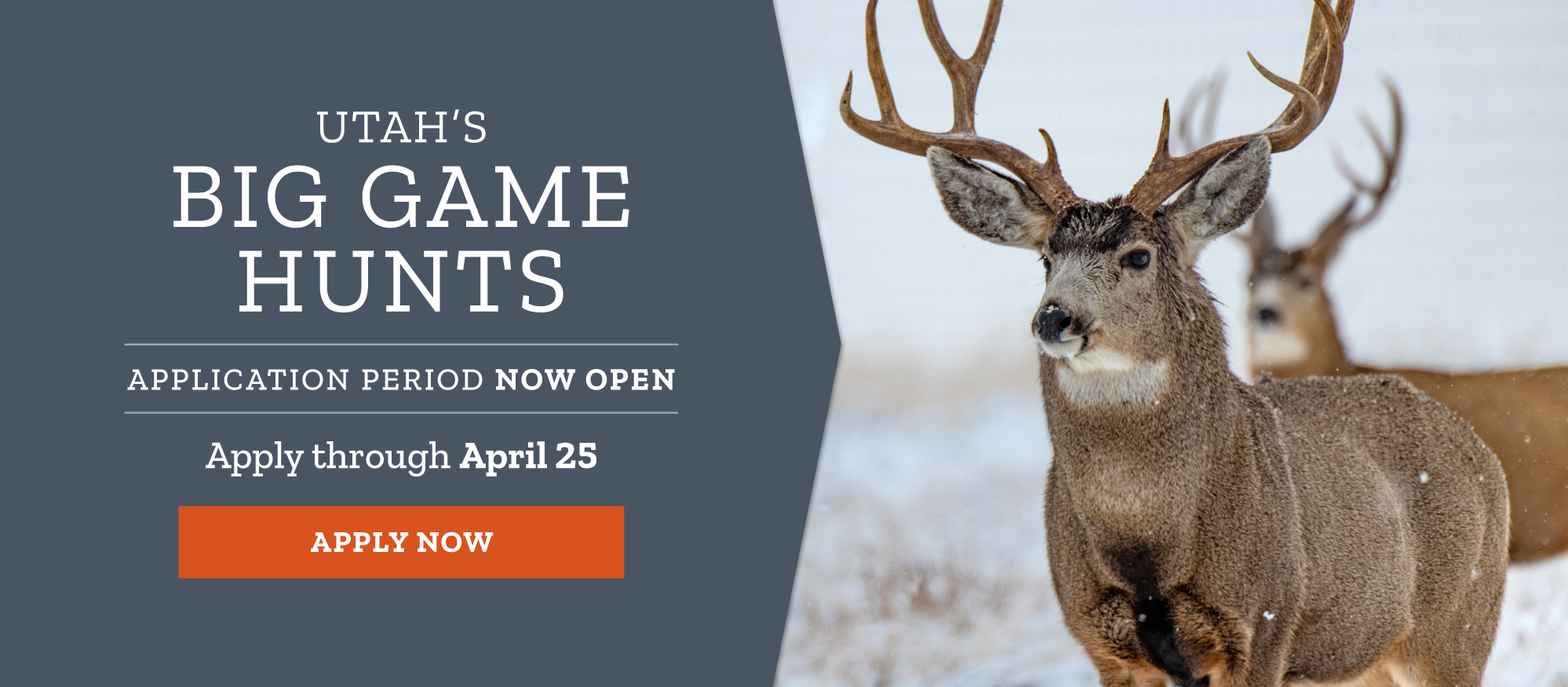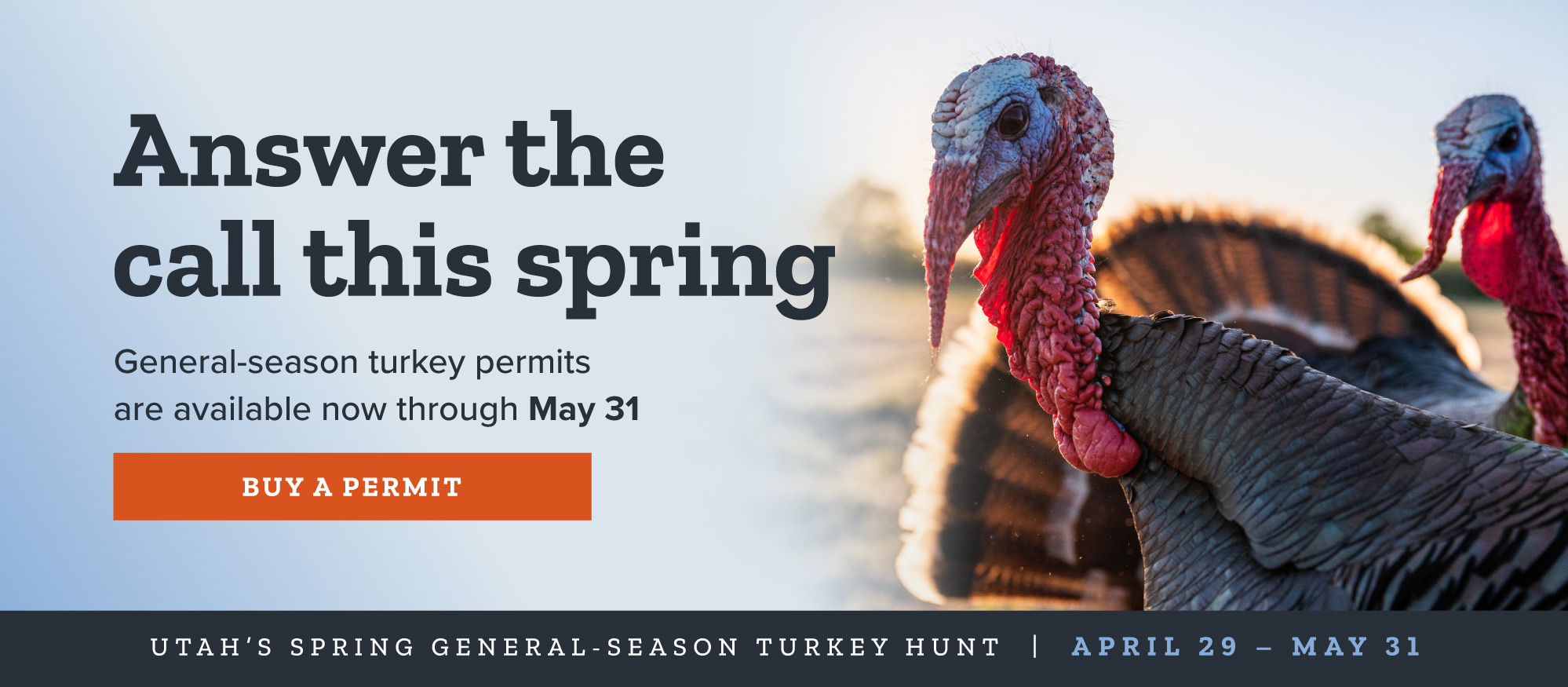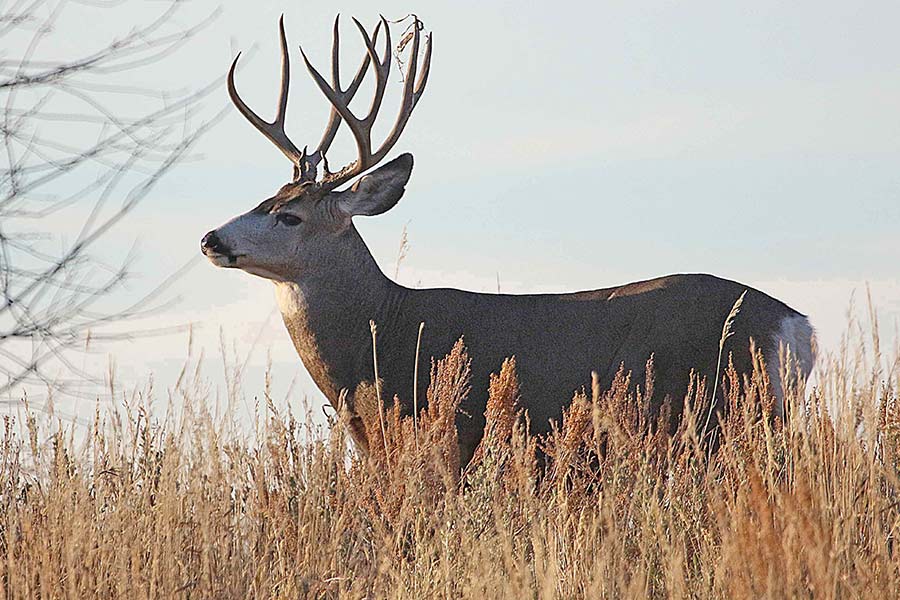DWR releases recommendations for 2024 big game hunting permits, proposes changes to shed antler gathering
Salt Lake City — The Utah Division of Wildlife Resources is releasing its proposed big game hunting permit numbers for 2024 and is also proposing some changes to shed antler gathering in Utah. The DWR is asking for the public's feedback on these recommendations, as well as on a variety of other proposals.
What impacts deer populations in Utah
There are a few factors that impact deer populations in Utah and can cause them to increase or decrease. Some of those factors include:
- Weather and precipitation (either extreme, ongoing drought or really heavy snowfall during the winter)
- Predator balance
- The quality and quantity of available habitat (which can be impacted by weather as well)
- Adult doe survival
- Fawn survival
- Fawn production
"It should be noted that harvesting buck deer does not drive deer populations," DWR Big Game Coordinator Dax Mangus said. "That is a common misconception that we hear when we make permit number recommendations each year. The most important factors that drive deer population numbers are the survival rates of doe deer (since bucks don't have babies), fawn production and fawn survival after the winter. The way we hunt buck deer in Utah doesn't drive deer populations, but what happens with deer populations drives how we hunt buck deer."
How deer permit recommendations are made
The DWR manages deer, elk and other wildlife in accordance with approved management plans to help maintain healthy wildlife populations across the state. Along with using the management plans, DWR biologists also weigh additional factors and data in recommending hunting permit numbers for deer:
- Buck-to-doe ratios established in the management plans for each area of the state (including the current estimates, three-year averages and overall trends). The buck-to-doe ratios are a good way to manage social preferences for hunting deer.
- Current population estimates and demographics. (This data is collected through yearly surveys and classifications of deer herds.)
- Data from GPS collars and body condition of the deer (measured during annual capture efforts), which helps estimate deer survival for the winter.
- Hunter harvest rates from the prior hunting season (which can help with estimates for successful harvest in the upcoming year).
- Habitat and environmental conditions across the state.
"Utah has 31 general-season deer hunting units that are managed for post-hunting season buck-to-doe ratios of 15–17 or 18–20 bucks per 100 does," Mangus said. "The statewide average buck-to-doe ratio on public land, general-season deer hunting units was 21 bucks per 100 does after the 2023 hunting season. Good winter survival rates this year and high buck-to-doe ratios after last season puts us in a position where we can offer more buck deer hunting opportunities in 2024."
The DWR is proposing the following for general-season deer permits in the various areas of Utah:
- Northern Utah: Proposing an increase of 150 permits (about a 1% increase from last year).
- Central Utah: Proposing a decrease of 75 permits (a 1% decrease from last year).
- Southern Utah: Proposing an increase of 5,375 permits (about a 44% increase from last year).
- Southeastern Utah: Proposing an increase of 400 permits (about a 3% increase from last year).
- Northeastern Utah: Proposing an increase of 950 permits (about an 11% increase from last year).
DWR biologists are recommending a total of 71,525 general-season deer hunting permits, which is a 6,800-permit increase from the previous year.
"During our big game captures this last winter, we found that a majority of the deer throughout the state were healthy and in great condition with high body fat," Mangus said. "Our animals with GPS collars are showing really high survival rates in both northern and southern Utah. We are anticipating excellent winter survival and are happy to see our deer populations starting to look better after being hit hard by the severe winter in 2022–23, especially in the northern parts of the state. Deer populations in southern Utah are looking great with their third consecutive year of high fawn production and survival rates. Biologists look closely at each hunting unit and individual situation when they make permit recommendations. We use the best available data and our management plans to make proactive recommendations for the herd health of our wildlife."
Elk permit recommendations
The current statewide elk management plan includes an objective to have almost 80,000 elk across Utah — there are currently an estimated 80,600 elk in the state. DWR biologists are recommending a slight increase in public draw limited-entry bull elk permits and for the antlerless elk permits for the 2024 hunts.
Big game permit recommendations
The table below shows the permit recommendations for 2024, including those for the big game hunts, the once-in-a-lifetime hunts and the antlerless hunts:
| Hunt | 2023 Permits | 2024 Recommended Permits |
|---|---|---|
| General-season buck deer | 64,725 | 71,525 |
| Limited-entry deer | 1,299 | 1,339 |
| Antlerless deer | 530 | 450 |
| General-season any bull elk | 15,000 |
|
| General-season spike bull elk | 15,000 | 15,000 (sold over the counter, with a cap of 4,500 multi-season permits) |
| Antlerless elk | 19,857 | 19,626 |
| Youth draw-only any bull/hunter's choice elk | 750 | 750 |
| Limited-entry bull elk | 3,336 | 3,415 |
| Buck pronghorn | 1,351 | 1,506 |
| Doe pronghorn | 155 | 210 |
| Bull moose | 102 | 101 |
| Antlerless moose | 9 | 12 |
| Bison | 177 | 94 |
| Desert bighorn sheep | 75 | 76 |
| Rocky Mountain bighorn sheep | 52 | 57 |
| Rocky Mountain bighorn sheep ewe hunt | 5 | 5 |
| Mountain goat | 94 | 95 |
Antlerless permit recommendations
The DWR issues antlerless permits for big game species in Utah for several reasons:
- To manage population size to the approved population objectives
- For herd health, including reducing disease concerns in certain parts of the state
- To improve the health of the habitat (and to avoid overgrazing)
- To reduce conflicts on private property, including depredation issues
"Because reducing the number of female animals in a herd can reduce the overall population, all of Utah's recommended doe deer hunts are designed to be very targeted to address localized areas of specific concern, conflicts, disease issues or public safety considerations," Mangus said. "Currently, there are no doe deer hunts in Utah that are aimed at reducing the overall deer population on a hunting unit."
Shed antler gathering recommendations
During the 2024 legislative session, HB382 was passed, which designates that the Utah Wildlife Board has the authority to make a few updates to shed hunting in Utah. Those include the option to establish a season for recreational antler or horn gathering for both residents and non-residents and designating rules regarding the commercial gathering and selling of shed antlers. The new law also establishes a restitution value for shed antlers at $30 per pound and provides definitions for shed antlers and horns.
The DWR also recently formed a committee of diverse stakeholders to examine shed antler gathering in Utah. Under the new legislation, the DWR is proposing a few changes to shed antler gathering, including:
- No seasonal closures for Utah residents regarding shed antler gathering.
- A season for non-residents that runs from May 1 to Dec. 31 each year.
- Continuing to require the ethics course for residents and non-residents, and requiring it for any antler gathering between Jan. 1 and May 31 each year. The completion certificate must be carried (either digitally or physically) by the individual while gathering shed antlers.
- Allowing for emergency closures of antler gathering that are triggered by emergency winter feeding. Any closures for shed hunting would be statewide. The only exception for this would be on private land if the shed antlers were interfering with normal agricultural practices.
- Requiring a certification of registration for commercial antler buyers (an individual or entity that purchases shed antlers or shed horns for the purpose of reselling them for financial gain).
- Clarifying the legality of antler markets (allowing people to modify and resell the antler if the antler was obtained legally).
Big game rule change proposals
The DWR is also proposing a few other changes to current big game rules, including:
- Changing the rule language for night vision devices from "unlawful to use" to "unlawful to possess" while taking or locating big game from July 31 to Dec. 31, in order to make the rule enforceable for conservation officers.
- Removing the language in the rule that requires aircraft to take off and land "only on improved airstrips," due to the rule already containing multiple provisions to limit hunting from an aircraft.
- Removing the requirement to plug bighorn sheep to make it easier for hunters and because the needed harvest data can be collected electronically.
- Removing the requirement for hunters to check in management bucks and cactus bucks to make it easier for hunters and because the needed data can be collected electronically.
CWMU antlerless permit number recommendations
The DWR oversees the Cooperative Wildlife Management Unit program, which allocates hunting permits to private landowners who then provide hunting opportunities to public and private hunters for a variety of wildlife species. The CWMU program in Utah has opened more than 2 million acres of private land to the public for hunting.
If the DWR recommendation is accepted as proposed, there will be 9 fewer private antlerless permits, and an additional 104 public antlerless permits allocated to CWMUs for the 2024 hunting season, for a total of 138 private and 1,251 public antlerless CWMU permits. The rest of the CWMU permits for 2024 were already approved by the wildlife board in a previous meeting.
The DWR is also proposing to approve applications for one new CWMU, one application change for an existing CWMU, and renewing 44 other CWMU applications.
Give feedback
The public meetings for the recommendations can either be viewed virtually or attended in person. You can view the biologists' presentations before the meetings and share your feedback about them on the DWR website. The presentations are also available on the DWR YouTube channel, but comments can only be submitted through the forms on the DWR website.
The public comment period opened on March 28 for each of the five Regional Advisory Council meetings and for the Utah Wildlife Board meeting. Public comments submitted within the online-comment timeframes listed below will be shared with the RAC and wildlife board members at each respective meeting. Members of the public can choose to either watch the meetings online or attend them in person. If you wish to comment during the meeting, you must attend in person. Online comments will only be accepted until the deadlines listed below.
The meetings will be held on the following dates and times:
- Northern Utah RAC meeting: April 10 at 6 p.m. at the Weber County Commission Chambers at 2380 Washington Blvd. #240 in Ogden. (Online comments must be submitted by April 4 at 11:59 p.m.)
- Central Utah RAC meeting: April 11 at 6 p.m. at the DWR Springville Office at 1115 N. Main St. in Springville. (Online comments must be submitted by April 4 at 11:59 p.m.)
- Southern Utah RAC meeting: April 16 at 6 p.m. in the Gilbert Great Hall (room 203) of the R. Haze Hunter Alumni Center at Southern Utah University at 405 W. University Blvd. in Cedar City. (Online comments must be submitted by April 10 at 11:59 p.m.)
- Southeastern Utah RAC meeting: April 17 at 6 p.m. at the John Wesley Powell Museum at 1765 E. Main St. in Green River. (Online comments must be submitted by April 10 at 11:59 p.m.)
- Northeastern Utah RAC meeting: April 18 at 6 p.m. at the DWR Vernal Office at 318 N. Vernal Ave. (Online comments must be submitted by April 10 at 11:59 p.m.)
- Utah Wildlife Board meeting: May 2 at 9 a.m. at the Eccles Wildlife Education Center at 1157 South Waterfowl Way in Farmington. (Online comments must be submitted by April 25 at 11:59 p.m.)

















